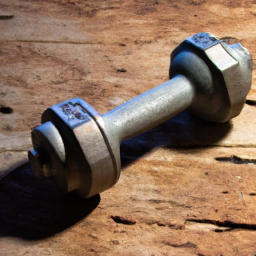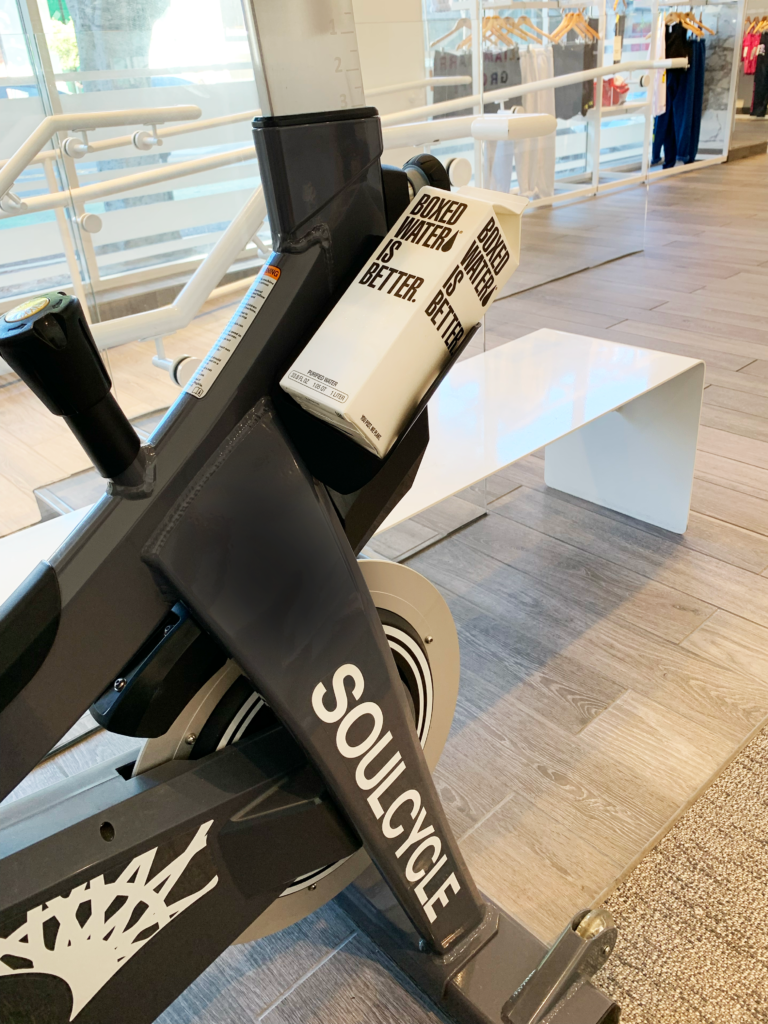Are you torn between bodyweight exercises and weight lifting for your fitness routine? Look no further as we explore the pros and cons of both workout options, helping you decide which one is best suited for your goals and preferences. Whether you prefer the convenience and versatility of bodyweight exercises or the intensity and muscle-building potential of weight lifting, this article will provide valuable insights to help you choose the right workout routine for you.
Benefits of Bodyweight Exercises
Improves overall strength and endurance
Bodyweight exercises are an excellent way to improve your overall strength and endurance. By using your own body as resistance, you can build strength in your muscles and increase your endurance over time. Exercises like push-ups, squats, lunges, and planks target multiple muscle groups and help develop functional strength that translates into everyday activities.
Requires minimal equipment
One of the great advantages of bodyweight exercises is that they require minimal or no equipment at all. You can perform these exercises just about anywhere, whether it’s in the comfort of your own home, at a park, or while traveling. This accessibility makes it easy to incorporate bodyweight exercises into your daily routine without the need for a gym membership or specialized equipment.
Can be done anywhere, anytime
The beauty of bodyweight exercises is their flexibility and convenience. Whether you’re at home, in a hotel room, or at a park, you can perform bodyweight exercises whenever and wherever you want. This makes it incredibly convenient for individuals with busy schedules or those who travel frequently. Additionally, bodyweight exercises are a time-efficient way to fit in a workout without the need to commute to a gym.
Promotes functional movement patterns
Bodyweight exercises incorporate movements that mimic real-life activities, known as functional movement patterns. Unlike traditional weight lifting exercises that often isolate specific muscles, bodyweight exercises engage multiple muscle groups simultaneously, promoting efficient and functional movement. This can help improve your overall coordination, balance, and mobility, making everyday tasks easier and reducing the risk of injury.
Ideal for beginners
If you’re new to fitness or strength training, bodyweight exercises are an ideal starting point. They allow beginners to learn proper form and technique without the added complexity or risk of weight lifting. Bodyweight exercises provide a solid foundation for building strength, developing body awareness, and improving overall fitness. As you progress, you can gradually increase the difficulty of the exercises to continue challenging your body.
Drawbacks of Bodyweight Exercises
Limited resistance
One of the drawbacks of bodyweight exercises is the limited resistance they provide. While bodyweight exercises are effective for building strength and endurance, they may not provide enough resistance for individuals who have more advanced fitness goals or those who have been strength training for a while. To continue progressing and challenging your muscles, you may eventually need to incorporate additional resistance, such as weights or resistance bands.
Can plateau in terms of muscle growth
While bodyweight exercises can be effective for beginners and those in the early stages of their fitness journey, they may not provide the same level of muscle growth as weight lifting exercises. As your muscles adapt to the resistance provided by bodyweight exercises, they can reach a plateau where further muscle growth becomes limited. To stimulate further muscle growth, it may be necessary to incorporate weight lifting exercises into your routine.
May not provide enough challenge for advanced lifters
For individuals who have been engaging in regular weight lifting or have advanced fitness goals, bodyweight exercises alone may not provide enough challenge or stimulus for continued progress. Advanced lifters may require heavier weights or more intense resistance training to continue building muscle and strength. While bodyweight exercises can still play a valuable role in their routine, weight lifting exercises may need to be incorporated to ensure continued progress.
Higher risk of overuse injuries
Another potential drawback of bodyweight exercises is the higher risk of overuse injuries. Since bodyweight exercises rely on repetitive movements and use the same muscles repeatedly, there is a risk of straining or overloading certain muscles and joints. It’s essential to listen to your body, vary your exercises, and ensure proper form to minimize the risk of overuse injuries. Incorporating rest days and recovery strategies into your routine can also help prevent injuries and promote overall muscle and joint health.
Benefits of Weight Lifting
Allows for progressive overload
Weight lifting allows for progressive overload, which is essential for muscle growth and strength gains. By gradually increasing the weight or resistance used in your exercises, you can continually challenge your muscles and force them to adapt and grow stronger. Progressive overload is a fundamental principle of weight lifting and ensures that you continue to make progress towards your fitness goals.
Greater potential for muscle growth
If your primary fitness goal is to build muscle, weight lifting offers a greater potential for muscle growth compared to bodyweight exercises alone. Lifting heavier weights and incorporating resistance training stimulates muscle hypertrophy, leading to increased muscle mass. Weight lifting exercises target specific muscle groups, allowing you to isolate and focus on specific areas of your body for aesthetic or functional purposes.
Increases bone density
Weight lifting not only strengthens your muscles but also increases bone density. As you lift weights, your bones experience mechanical stress, stimulating the production of new bone cells and ultimately increasing bone density. This is especially important for individuals at risk of osteoporosis or age-related bone loss. By incorporating weight lifting into your routine, you can help maintain and improve your bone health.
Enhances metabolic rate
Weight lifting has been shown to enhance your metabolic rate, leading to increased calorie burning even at rest. Resistance training stimulates the growth of lean muscle mass, and muscle tissue requires more energy to maintain compared to fat tissue. As a result, weight lifting can help boost your metabolism, making it easier to maintain a healthy weight and body composition. It’s important to note that the metabolic benefits of weight lifting can be experienced by individuals of all fitness levels, not just those looking to build muscle.
Offers a wide variety of exercises
Weight lifting offers a wide variety of exercises, providing endless opportunities to target different muscle groups and work on specific fitness goals. Whether you prefer compound exercises like squats and deadlifts that engage multiple muscle groups simultaneously, or isolation exercises that target specific muscles, weight lifting allows for a diverse range of movements and variations. This variety helps keep your workouts engaging and prevents boredom or plateauing.
Drawbacks of Weight Lifting
Requires access to equipment or gym
One of the drawbacks of weight lifting is that it typically requires access to equipment, such as dumbbells, barbells, or weight machines. This means that weight lifting may not be as accessible for individuals who do not have access to a gym or the necessary equipment. However, there are alternatives such as home gym setups or bodyweight exercises that can still provide effective resistance training even without traditional weight lifting equipment.
Possibility of incorrect form or injury without proper guidance
Weight lifting exercises, especially those that involve heavy weights, can pose a higher risk of injury if performed with incorrect form or technique. It’s crucial to learn proper lifting techniques and progress gradually to avoid strains, sprains, or more severe injuries. Seeking guidance from a qualified personal trainer or fitness professional can help ensure that you’re performing exercises correctly and safely, reducing the risk of injury.
May be intimidating for beginners
Weight lifting, especially in a gym setting, can sometimes feel intimidating for beginners. The presence of experienced lifters and the unfamiliarity with equipment or proper form may discourage individuals from starting a weight lifting routine. However, it’s important to remember that everyone starts somewhere, and with the right guidance and knowledge, beginners can safely and effectively incorporate weight lifting into their fitness regimen.
Recovery time may be longer
Another aspect to consider when choosing weight lifting as your primary workout routine is the potential for longer recovery times. Weight lifting places a significant amount of stress on your muscles, and they require adequate time to recover and repair. It’s important to allow for proper rest days and prioritize recovery strategies such as stretching, foam rolling, and adequate sleep to optimize your results and prevent overtraining.
Determining Your Fitness Goals
Identifying strength and muscle-building goals
When deciding between bodyweight exercises and weight lifting, it’s important to first identify your fitness goals. If your primary focus is on building strength or increasing muscle mass, weight lifting may be more suitable for you. The progressive overload and greater potential for muscle growth offered by weight lifting make it an excellent choice for individuals looking to gain strength and build lean muscle.
Considering time constraints
Another factor to consider is your time constraints. Bodyweight exercises can be performed anywhere, anytime, making them a convenient option for individuals with busy schedules or those who travel frequently. On the other hand, weight lifting may require you to dedicate specific time slots for gym sessions or training with weights. Consider how much time you can realistically allocate to your workouts when deciding which workout routine is right for you.
Assessing personal preferences and interests
Your personal preferences and interests should also play a role in your decision. Some individuals may enjoy the simplicity and versatility of bodyweight exercises, while others thrive on the challenge and variety offered by weight lifting. It’s important to choose a workout routine that you enjoy and look forward to, as this will increase the likelihood of sticking to it long-term.
Evaluating current fitness level
Lastly, evaluate your current fitness level and experience with exercise. If you’re new to fitness or have limited experience with strength training, starting with bodyweight exercises can help you develop a solid foundation of strength, proper form, and body awareness. On the other hand, if you have been strength training for a while and have reached a plateau in terms of muscle growth or strength gains, weight lifting may be the next logical step to continue progressing.
Considering Your Lifestyle
Flexibility and convenience
When considering your lifestyle, it’s important to factor in the flexibility and convenience of a workout routine. If you have a hectic schedule or frequently travel, bodyweight exercises offer the advantage of being able to be performed anytime, anywhere. This flexibility allows you to stay consistent with your workouts and eliminates the need to commute to a gym or rely on specific equipment.
Travel and accessibility
For individuals who travel frequently or may not have access to a gym, bodyweight exercises can be an excellent choice. Whether you’re in a hotel room, at a park, or visiting family and friends, you can always find a space to perform bodyweight exercises. This ensures that you can maintain your fitness routine regardless of your location, reducing the likelihood of falling off track while on the go.
Cost considerations
Cost is another factor to consider when choosing a workout routine. Bodyweight exercises typically do not require any additional equipment, making them a more cost-effective option. On the other hand, weight lifting may require an investment in equipment, gym memberships, or personal training sessions. It’s important to assess your budget and determine what you are willing and able to invest in terms of fitness resources.
Availability of time and resources
Evaluate the availability of time and resources you have for your workouts. If you have limited time or find it challenging to fit in gym sessions or travel to a specific location for your workouts, bodyweight exercises provide a convenient solution. On the other hand, if you have more time and access to a gym or weights, weight lifting can offer a more structured and specialized approach to your fitness journey.
Choosing Based on Fitness Level
Beginners or those new to exercise
For beginners or those who are new to exercise, bodyweight exercises are an ideal starting point. They allow you to learn proper form and technique without the added complexity or risk of weight lifting. Bodyweight exercises gradually build strength and can help develop body awareness and coordination, setting a solid foundation for future fitness endeavors.
Intermediate level
Individuals at an intermediate level may have some experience with bodyweight exercises and basic strength training. At this stage, a combination of bodyweight exercises and weight lifting can be beneficial. By incorporating weights and resistance training, you can continue challenging your muscles and progressing towards more advanced fitness goals.
Advanced lifters
Advanced lifters, those who have been regularly strength training and have established a solid foundation, may benefit from focusing more on weight lifting exercises. As they continuously challenge their muscles, incorporating heavier weights and more complex movements can help advanced lifters push their limits and continue making progress towards their fitness goals.
Athletes with specific training needs
Athletes with specific training needs may require a customized workout routine that combines both bodyweight exercises and weight lifting. The specific demands of their sport or activities may call for a targeted approach to improve performance. By incorporating both types of exercises, athletes can work on developing overall strength, explosive power, and sport-specific skills.
Combining Bodyweight and Weight Lifting
Utilizing bodyweight exercises for warm-ups and mobility
Bodyweight exercises can be an excellent addition to your warm-up routine. Incorporating exercises such as jumping jacks, bodyweight squats, or lunges can help increase blood flow, elevate your heart rate, and prepare your muscles for the upcoming workout. These exercises also promote mobility and flexibility, reducing the risk of injury during weight lifting exercises.
Incorporating weight lifting for strength training
Weight lifting is an effective way to build strength and increase muscle mass. By incorporating weights or resistance machines into your routine, you can target specific muscle groups and progressively challenge yourself. Start with lighter weights and gradually increase the load to ensure proper form and minimize the risk of injury.
Creating a balanced workout program
To create a well-rounded workout program, it’s important to balance bodyweight exercises and weight lifting. Bodyweight exercises can provide a solid foundation of strength and promote functional movement patterns, while weight lifting allows for progressive overload and greater potential for muscle growth. Incorporating both types of exercises ensures that you’re targeting various muscle groups, promoting overall strength, and preventing muscle imbalances.
Alternating between bodyweight and weight lifting routines
Alternating between bodyweight and weight lifting routines can add variety and prevent boredom in your workouts. For example, you can dedicate certain days of the week to bodyweight exercises and other days to weight lifting. This approach allows you to continually challenge your body while enjoying the benefits of both workout styles. It’s important to listen to your body and adjust your routine as needed to ensure proper recovery and avoid overtraining.
Considering Safety and Injury Prevention
Proper form and technique
Proper form and technique are crucial when performing any exercise, whether it’s bodyweight movements or weight lifting exercises. Incorrect form can increase the risk of injury and compromise the effectiveness of the exercise. Take the time to learn proper form for each exercise and focus on maintaining good form throughout your workouts. If you’re unsure about proper technique, seek guidance from a qualified fitness professional.
Gradual progression
When incorporating bodyweight exercises or weight lifting into your routine, it’s important to progress gradually. Start with exercises that are appropriate for your current fitness level and gradually increase the difficulty as your strength and endurance improve. This gradual progression allows your muscles, joints, and connective tissues to adapt and reduces the risk of overuse injuries.
Warming up and cooling down
Warming up before your workouts and cooling down afterward are essential for injury prevention and optimizing your performance. Prior to your workout, engage in dynamic stretching or perform a short cardiovascular activity to increase blood flow, warm up your muscles, and improve joint mobility. After your workout, incorporate static stretching and foam rolling to promote muscle recovery and flexibility.
Listening to your body
One of the most important aspects of safety and injury prevention is listening to your body. Pay attention to any pain or discomfort during your workouts and adjust accordingly. Pushing through pain can lead to injuries, so it’s important to know your limits and respect what your body is telling you. If you experience persistent pain or discomfort, it’s important to seek medical advice or consult with a healthcare professional.
Seeking Professional Guidance
Consulting with a personal trainer or fitness expert
If you’re unsure about which workout routine is best for you or need guidance on proper form and technique, consulting with a personal trainer or fitness expert can be beneficial. They can assess your individual needs, goals, and fitness level, and create a customized workout program tailored to your specific requirements. A personal trainer can also provide ongoing support, motivation, and accountability throughout your fitness journey.
Seeking advice from healthcare professionals
If you have any pre-existing medical conditions or concerns, it’s important to seek advice from healthcare professionals before starting a new workout routine. They can provide valuable insights, recommend modifications or precautions, and ensure that your exercise program aligns with your overall health and well-being.
Joining fitness classes or programs
Joining fitness classes or programs can be a great way to stay motivated, receive guidance, and connect with like-minded individuals. Whether it’s a bodyweight-based class or a weight lifting program, participating in group settings can provide structure, accountability, and an opportunity to learn from experienced instructors.
Finding online resources and tutorials
In the digital age, there are countless online resources and tutorials available for individuals seeking guidance on bodyweight exercises or weight lifting. From workout videos and exercise demonstrations to fitness blogs and forums, the internet can be a valuable source of information and inspiration. It’s important to ensure that the resources you utilize come from reputable sources and align with your specific fitness goals and needs.





